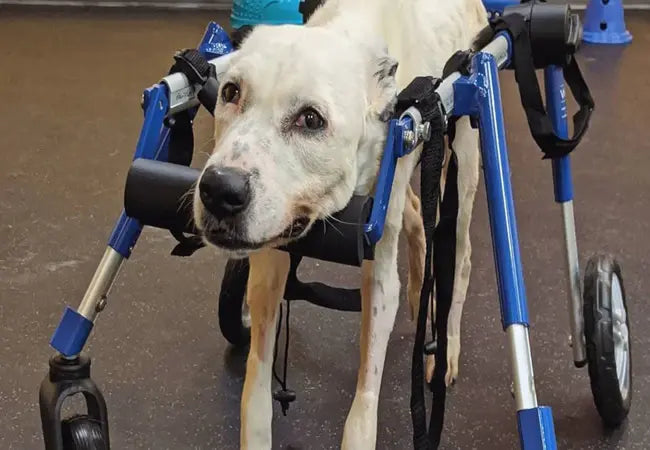Vestibular Disease in Dogs: Veterinary Guide & Care Tips 2025 🩺🐾

In this article
Vestibular Disease in Dogs: Veterinary Guide & Care Tips 2025 🩺🐾
By Dr. Duncan Houston BVSc
Hi there, I’m Dr Duncan Houston BVSc, your caring veterinarian and founder of Ask A Vet. In this comprehensive 2025 guide, we'll explore vestibular disease—also known as “old dog” syndrome—a sudden, alarming balance disorder in dogs. You’ll learn why it happens, how to recognize it, the diagnostic process, treatment options, home care techniques, and how to help both you and your pup along the recovery journey. Let’s restore stability and peace of mind 🐶💙
1. What Is Vestibular Disease?
The vestibular system—located in the inner/middle ear and brainstem—controls balance, posture, head position, and eye movements. When this system malfunctions, dogs may appear dizzy or disoriented, resembling human vertigo.
2. Sudden Onset: Old Dog vs Central vs Peripheral
- Idiopathic ("old dog") vestibular disease: Most common; onset within hours; dogs show peak symptoms within 48 h and often improve in 2–3 weeks.
- Peripheral vestibular disease: Due to inner/middle ear issues—infectious, traumatic, ototoxic with medications.
- Central vestibular disease: Brainstem or cerebellum involvement (stroke, tumor, inflammatory, fungal); more severe; may cause additional neurological signs.
3. Recognizing the Signs 🕵️♂️
- Head tilt—often to one side.
- Circling or walking in one direction.
- Ataxia—loss of coordination, staggering, wide-based gait.
- Nystagmus—rapid involuntary eye movements.
- Vomiting or drooling—motion sickness.
- Difficulty standing or leaning/falling.
- Possible Horner’s syndrome**—drooping eyelid or reduced pupil on one side.
4. What Causes It?
**Idiopathic** (unknown cause of peripheral origin) in older dogs is most common. Other causes include:
- Middle or inner ear infections (otitis media/interna).
- Trauma or ruptured eardrum.
- Brain tumors, stroke, inflammation (MUO, meningitis).
- Hypothyroidism.
- Ototoxic drugs, e.g., certain antibiotics or metronidazole.
5. How Vets Diagnose Vestibular Disease 🔬
- Medical history & physical exam, including otoscopic exam.
- Neurological examination to differentiate peripheral vs central involvement.
- Blood and urine tests to detect underlying issues such as hypothyroidism or infection.
- Ear cytology and culture if ear infection is suspected.
- Imaging (X‑rays/CT/MRI) when central disease or tumors are suspected.
6. Treatment Strategies 🛠️
6.1 Idiopathic Vestibular Disease
- Supportive care: Because it often resolves naturally within 2–3 weeks.
- Anti-nausea meds: e.g., meclizine, maropitant to ease motion sickness.
- Fluids: IV or subcutaneous for dehydration.
6.2 Peripheral Causes (Ear Infection, Trauma)
- Antibiotics/antifungals via ear drops or systemically.
- Surgery if an abscess, polyp, or eardrum rupture requires intervention.
6.3 Central Causes (Tumors, Stroke, Infection)
- Tumor treatment: surgery, radiation, chemotherapy when appropriate.
- Anti-inflammatory/immunosuppressive therapy: corticosteroids or other agents for inflammatory causes.
- Supportive care: fluids, anti-nausea medications, and close monitoring.
7. Prognosis & Long-Term Outlook 📊
- Idiopathic peripheral: Excellent prognosis; most dogs regain most function; some persistent head tilt possible.
- Peripheral causes: Good to excellent, conditional on treating the underlying issue.
- Central vestibular disease: Prognosis depends on the cause; tumors or strokes carry guarded to poor outlook.
8. Home Care: Keep It Calm & Safe 🏡
- Safe environment: Remove trip hazards and block stairs.
- Comfortable bedding: Orthopedic–and easy access to food and water.
- Hand feeding & easy hydration: to prevent aspiration vomiting.
- Anti-nausea meds at home: as prescribed by vet.
- Assistive aids: Harness or sling for stability support.
9. How Ask A Vet 💡
- Ask A Vet: Telehealth triage, medication advice, follow-up monitoring, and reassessment guidance.
10. When to Contact the Vet Immediately ⚠️
- No improvement after 48–72 hours
- New neurological signs: seizures, vision changes, weakness
- Difficulty breathing, swallowing, or refusing food
- Ear pain, drainage, or fever suggesting infection
11. Final Thoughts 📝
Vestibular disease can be frightening but often improves dramatically with supportive care—especially in idiopathic or peripheral cases. By creating a calm, safe environment and using medications as directed, most dogs recover well. With guidance from Ask A Vet, soothing products from, you’re never alone in supporting your pup’s journey back to balance in 2025. 🐾💙
If your dog suddenly shows neurological or balance issues, schedule a telehealth consult via AskAVet.com. Download the app to stay supported with check-in tools, medication reminders, and care guidance. 🌟






